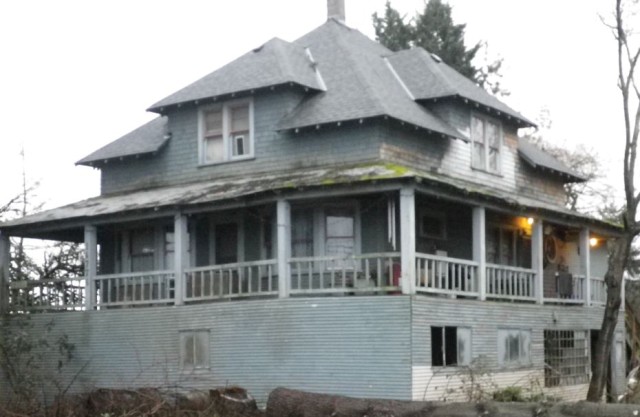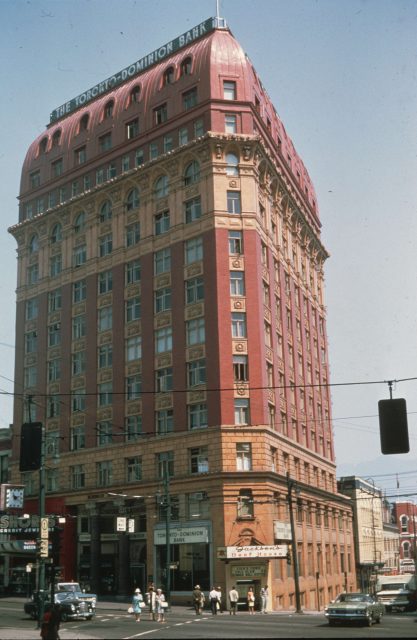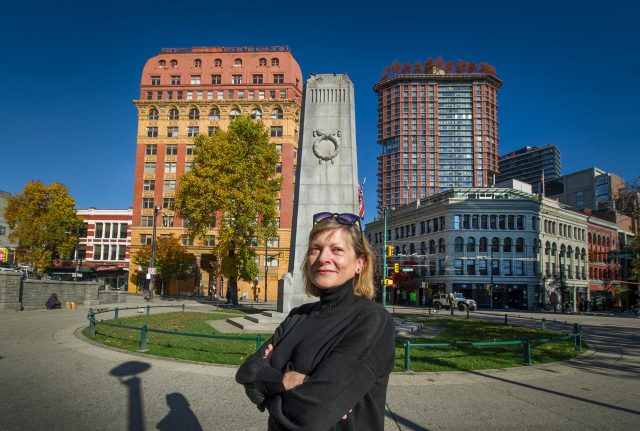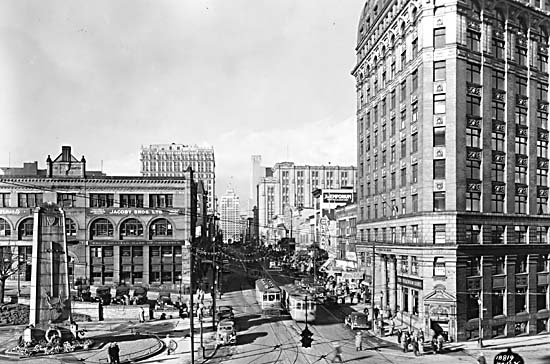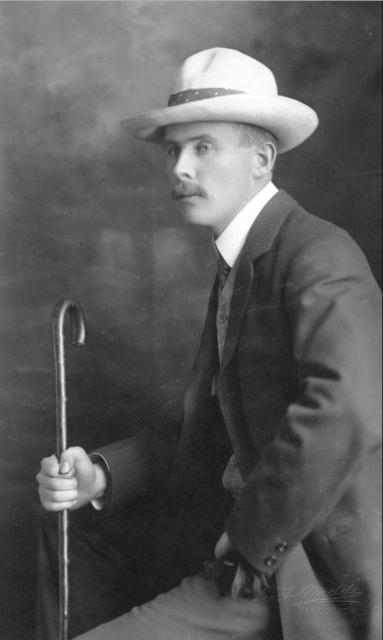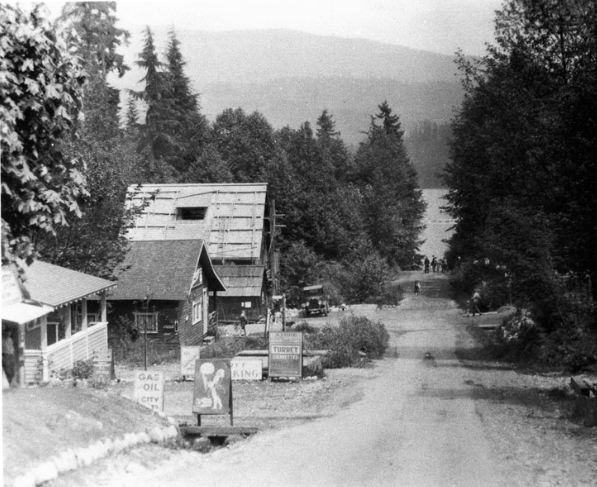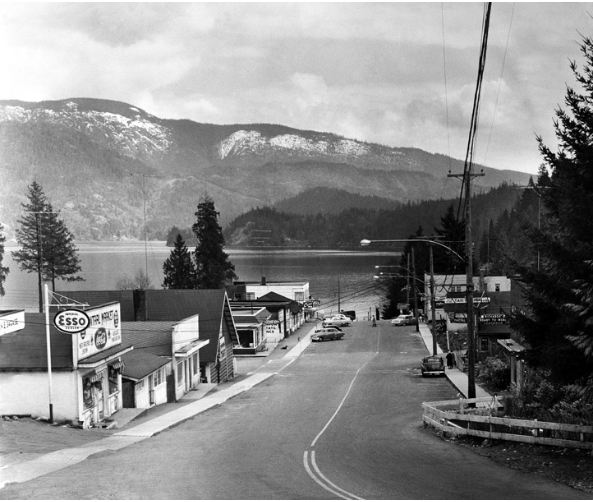The house on Somerset Street in North Vancouver was built in 1912 as a hunting lodge for Alvo von Alvensleben.
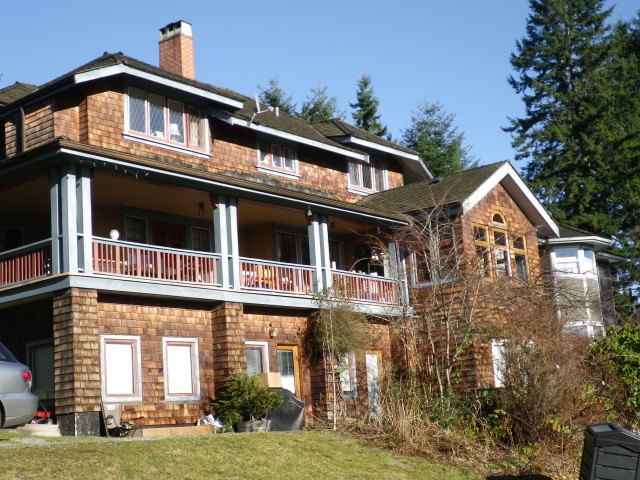
The story of Alvo von Alvensleben and the hunting lodge on Somerset appears in At Home with History: the secrets of Vancouver’s heritage houses:
A couple of weeks ago I was taking photos of this house on Somerset when Bob Findlay politely asked me what I was doing skulking around in his bushes. Fortunately, Bob, the current owner, has researched his house’s social history and kindly invited me inside to take a look around.
The house was built in 1912 as a hunting lodge for Alvo von Alvensleben. One of the first houses built in the area, it sits on a high piece of property overlooking Burrard Inlet. A century ago, it would have looked like it was carved out of the forest, with a grand wrap-around veranda and a circular carriage drive.
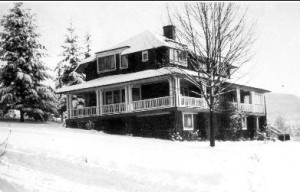
Son of a Count:
In 1912, Alvensleben was at the top of his career. The son of a German count, he came to Vancouver in 1904 with $4 in his pocket and dreams of finding gold in the Wild West. He was about 10 years too late, and ended up fishing for salmon until he made enough money to speculate in property.
He was wildly successful. Before WW1 he brought millions of dollars of German investment into BC. His family home is now part of the Crofton Girl’s School in Kerrisdale. He developed the Wigwam Inn into a luxury resort, financed the Dominion Building on Hastings Street, and he owned huge tracts of land all over BC, including Pitt Meadows.
Branded a Spy:
Like many land speculators Alvo went broke in 1913. While he was out of the country the following year, war broke, rumours abounded that he was a spy and he couldn’t return to Canada. The federal government confiscated everything he owned, and what’s really fascinating is that you can still see a bit of the red wax on the windows of his Somerset House when the government impounded the house.
I’ve written about Alvensleben and this house in At Home with History, and the history of the house gets interesting again in 1931 when the parents of actor John Drainie rented it for a few years. Orson Welles called him the greatest radio actor in the world. Young John was self-taught, and in a biography written by his daughter Bronwyn, she says one Christmas when her father was about 15 he directed a production of Twelfth Night in the living room.
The Gundry’s bought the house in 1945 and the family lived there until 1972. Mr. Gundry was a psychiatrist, and their daughter Fran was an archivist in Victoria. She told me that she spent years searching for secret tunnels but never found any.
Senator Ray Perrault and his wife Barbara, a former City of North Vancouver councillor lived here from 1974 until 1995.
Spy Story:
My favourite story of the house comes from Don Luxton, who has connected it to another of Alvensleben’s properties on Harris Road in Pitt Meadows, and to Baron Carl von Mackensen’s house in Port Kells. Don says that after war broke out there were rumours that the Pitt Meadows house, the Somerset Street House and von Mackensen’s Port Kell’s house were used by the Germans to pass secret signals by mirror. A century later it’s hard to imagine–and it’s a long distance between the three houses–but it’s possible. They did find a secret radio room in the turret of the Port Kells house, now the Baron’s Manor Pub.
© All rights reserved. Unless otherwise indicated, all blog content copyright Eve Lazarus.
